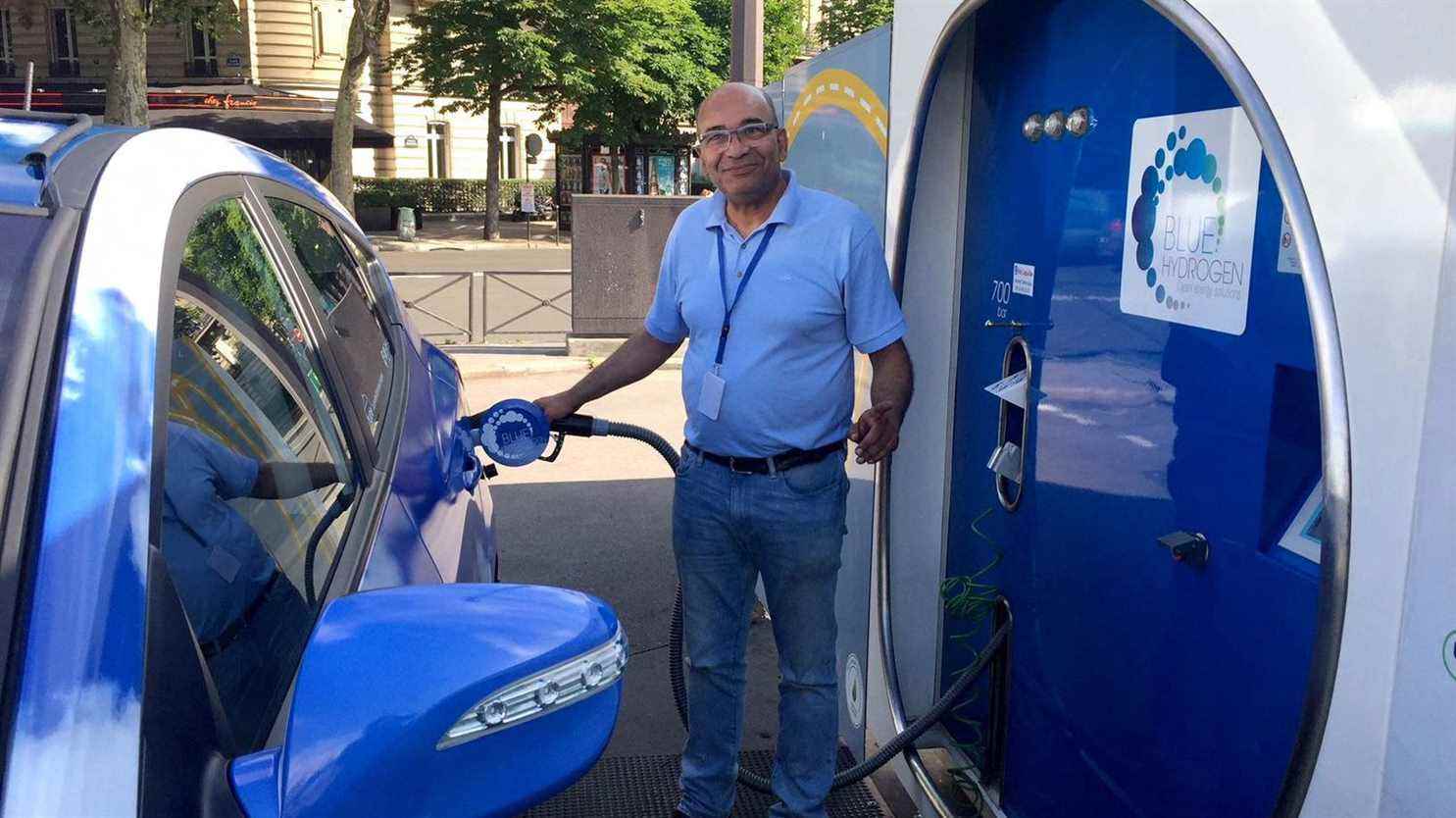Nabil has a sky blue car, dotted with clouds, in the colors of the company Hype, for which he works. He adopted it six years ago and it runs on hydrogen. “A full tank of hydrogen is done in much the same way as a conventional tank: we have a tank and a fuel cell – which is the heart of the car. The cell will take the hydrogen that we put it there and put it in contact with the oxygen in the ambient air. This contact will create electricity which will power the motor”details the taxi driver.
When Nabil started running on hydrogen, he only had one station to refuel, Place de l’Alma in Paris. From now on, it should find more and more since Hype announced on Monday April 25 the deployment of new charging stations for this gas for its 200 hydrogen taxis. The company has been relying on this technology since 2015, a way it believes to accelerate the deployment of clean vehicles. Indeed, if hydrogen is presented as decisive by many for the ecological transition, it is however only used in an anecdotal way in transport, while it is widely used in the oil and chemical industry.
To deploy new charging stations, Hype has partnered with HRS, the French manufacturer of these stations. “Currently, we are using four stations. We are aiming for 26 in the network by the end of 2024”explains Mathieu Gardie, the founder of the taxi company.
“We have objectives that remain very ambitious compared to the rest of the sector because we are really convinced that hydrogen is one of the elements of the solution to decarbonize transport.”
Mathieu Gardie, founder of Hypeat franceinfo
Nabil confirms: he sees only advantages to the hydrogen car. “I see this as progress in the way I work.” It highlights the absence of toxic fumes discharge – vehicles do not emit greenhouse gases but water vapor – and a bill at the pump almost identical to a full tank of gasoline. “It is possible to migrate to a solution that is more respectful of the environment and which, moreover, presents fewer constraints than battery-powered electricity”welcomes Nabil.
However, the production of hydrogen remains the major downside of this energy. Indeed, today it is mainly based on polluting fossil fuels. The alternative is therefore to produce it by electrolysis, with renewable electricity. “The principle of the electrolyser is to produce hydrogen from water: we break the water molecule and recover the H2 to make hydrogen”explains Mathieu Gardie.
This is why Hype has also teamed up with McPhy, a manufacturer of electrolysers. “We are going to be at stations that will have either an electrolyser that produces on site, or an electrolyser in the region and we will then bring the hydrogen to stations that will be in the same area. The company hopes to circulate up to 10,000 vehicles by 2024 and deploy in 15 other cities, in France and in Europe.
Developing the hydrogen car fleet: report by Boris Hallier
listen
